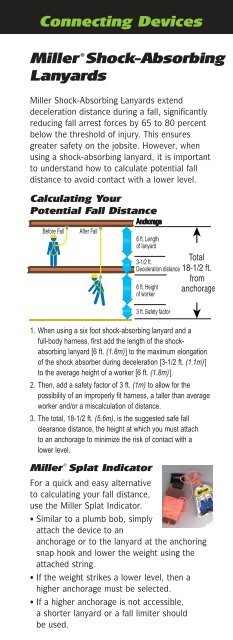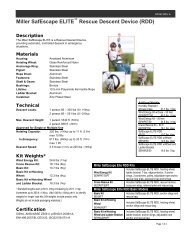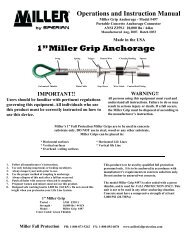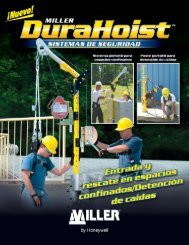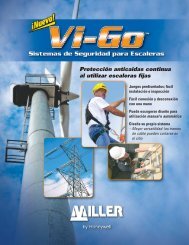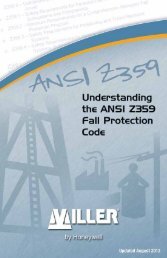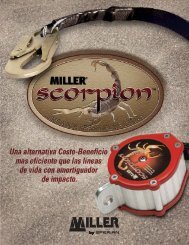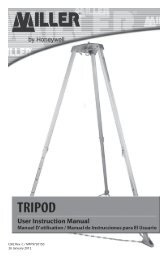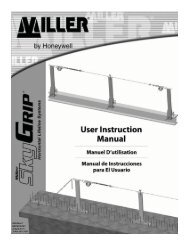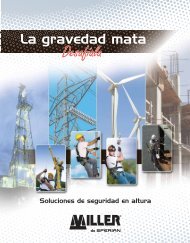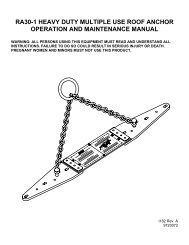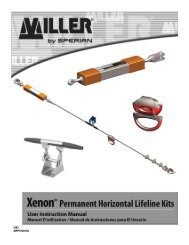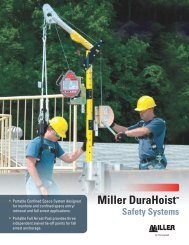Miller Catalog-english - Miller Fall Protection
Miller Catalog-english - Miller Fall Protection
Miller Catalog-english - Miller Fall Protection
Create successful ePaper yourself
Turn your PDF publications into a flip-book with our unique Google optimized e-Paper software.
Connecting Devices<br />
<strong>Miller</strong> ® Shock-Absorbing<br />
Lanyards<br />
<strong>Miller</strong> Shock-Absorbing Lanyards extend<br />
deceleration distance during a fall, significantly<br />
reducing fall arrest forces by 65 to 80 percent<br />
below the threshold of injury. This ensures<br />
greater safety on the jobsite. However, when<br />
using a shock-absorbing lanyard, it is important<br />
to understand how to calculate potential fall<br />
distance to avoid contact with a lower level.<br />
Calculating Your<br />
Potential <strong>Fall</strong> Distance<br />
1. When using a six foot shock-absorbing lanyard and a<br />
full-body harness, first add the length of the shockabsorbing<br />
lanyard [6 ft. (1.8m)] to the maximum elongation<br />
of the shock absorber during deceleration [3-1/2 ft. (1.1m)]<br />
to the average height of a worker [6 ft. (1.8m)].<br />
2. Then, add a safety factor of 3 ft. (1m) to allow for the<br />
possibility of an improperly fit harness, a taller than average<br />
worker and/or a miscalculation of distance.<br />
3. The total, 18-1/2 ft. (5.6m), is the suggested safe fall<br />
clearance distance, the height at which you must attach<br />
to an anchorage to minimize the risk of contact with a<br />
lower level.<br />
®<br />
<strong>Miller</strong> Splat Indicator<br />
For a quick and easy alternative<br />
to calculating your fall distance,<br />
use the <strong>Miller</strong> Splat Indicator.<br />
• Similar to a plumb bob, simply<br />
attach the device to an<br />
anchorage or to the lanyard at the anchoring<br />
snap hook and lower the weight using the<br />
attached string.<br />
• If the weight strikes a lower level, then a<br />
higher anchorage must be selected.<br />
• If a higher anchorage is not accessible,<br />
a shorter lanyard or a fall limiter should<br />
be used.


